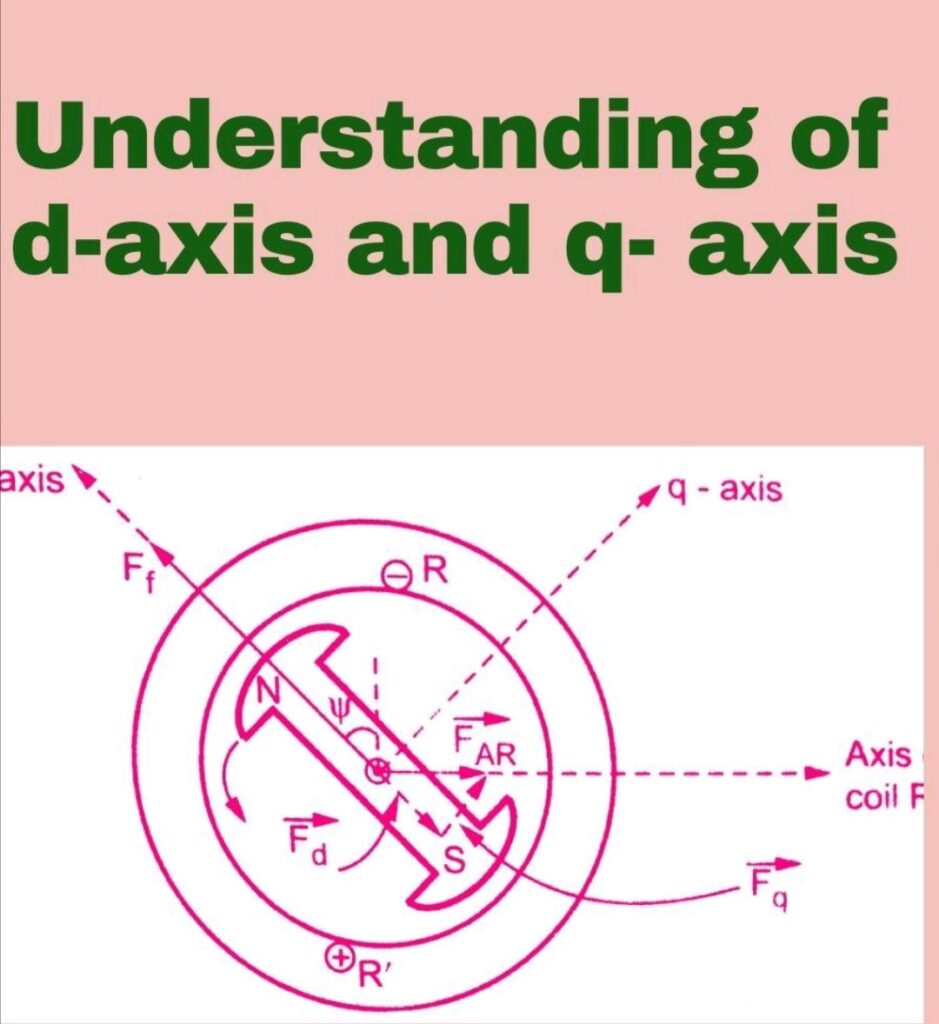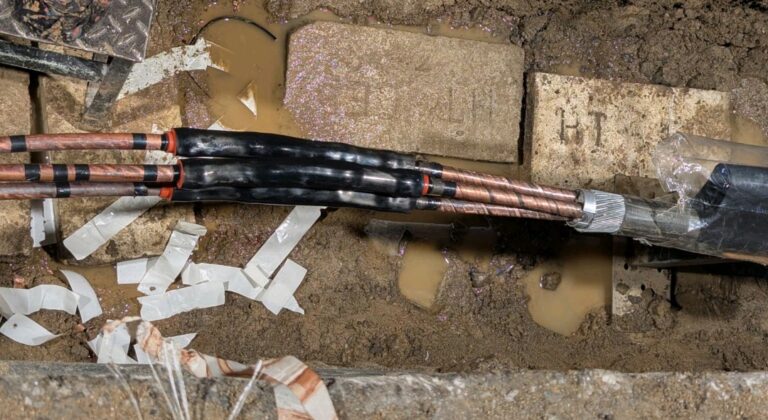𝐔𝐧𝐝𝐞𝐫𝐬𝐭𝐚𝐧𝐝𝐢𝐧𝐠 𝐨𝐟 𝐝-𝐚𝐱𝐢𝐬 𝐚𝐧𝐝 𝐪-𝐚𝐱𝐢𝐬
The d-axis (direct axis) and q-axis (quadrature axis) representation simplifies the analysis of synchronous machines by transforming the complex three-phase system into two orthogonal components:
𝐖𝐡𝐲 𝐝-𝐪 𝐀𝐱𝐢𝐬?
Simplifies rotating fields: Converts sinusoidal variations into steady-state components in a rotating reference frame.Separates fluxes: Decouples field excitation (d-axis) and torque production (q-axis).Models asymmetry: Accounts for different reactances (Xd>Xq) due to rotor construction.
𝐝-𝐀𝐱𝐢𝐬:-
Aligned with the rotor’s magnetic field (field excitation flux), responsible for reactive power.Represents the magnetizing component.Controls the reactive power flow and voltage regulation.In synchronous machines, the D-axis current (id) is responsible for producing the flux required for magnetization.
𝐪-𝐀𝐱𝐢𝐬:-
Perpendicular to the rotor’s field (armature flux), responsible for active power.Represents the torque-producing component.Controls the active power flow and determines the mechanical torque in the machine.The Q-axis current (iq) interacts with the rotor flux to generate electromagnetic torque (Te).
𝐃-𝐚𝐱𝐢𝐬 𝐚𝐧𝐝 𝐐 -𝐚𝐱𝐢𝐬 𝐢𝐧 𝐩𝐨𝐰𝐞𝐫 𝐬𝐲𝐬𝐭𝐞𝐦 𝐬𝐭𝐮𝐝𝐢𝐞𝐬
𝐒𝐭𝐞𝐚𝐝𝐲-𝐒𝐭𝐚𝐭𝐞 𝐀𝐧𝐚𝐥𝐲𝐬𝐢𝐬
D-Axis: Governs the reactive power and voltage regulation.Q-Axis: Governs the real power and torque production.
𝐓𝐫𝐚𝐧𝐬𝐢𝐞𝐧𝐭 𝐒𝐭𝐚𝐛𝐢𝐥𝐢𝐭𝐲
During faults or disturbances, the d-axis and q-axis reactance affect the transient (Xd′,Xq′) and sub transient (Xd′′,Xq′′) responses of the machine
If Xd is much larger than Xq, the machine will have a high synchronous reactance, limiting fault currents but reducing voltage regulation.Machines with smaller Xd and Xq provide better transient response but allow higher fault currents.

